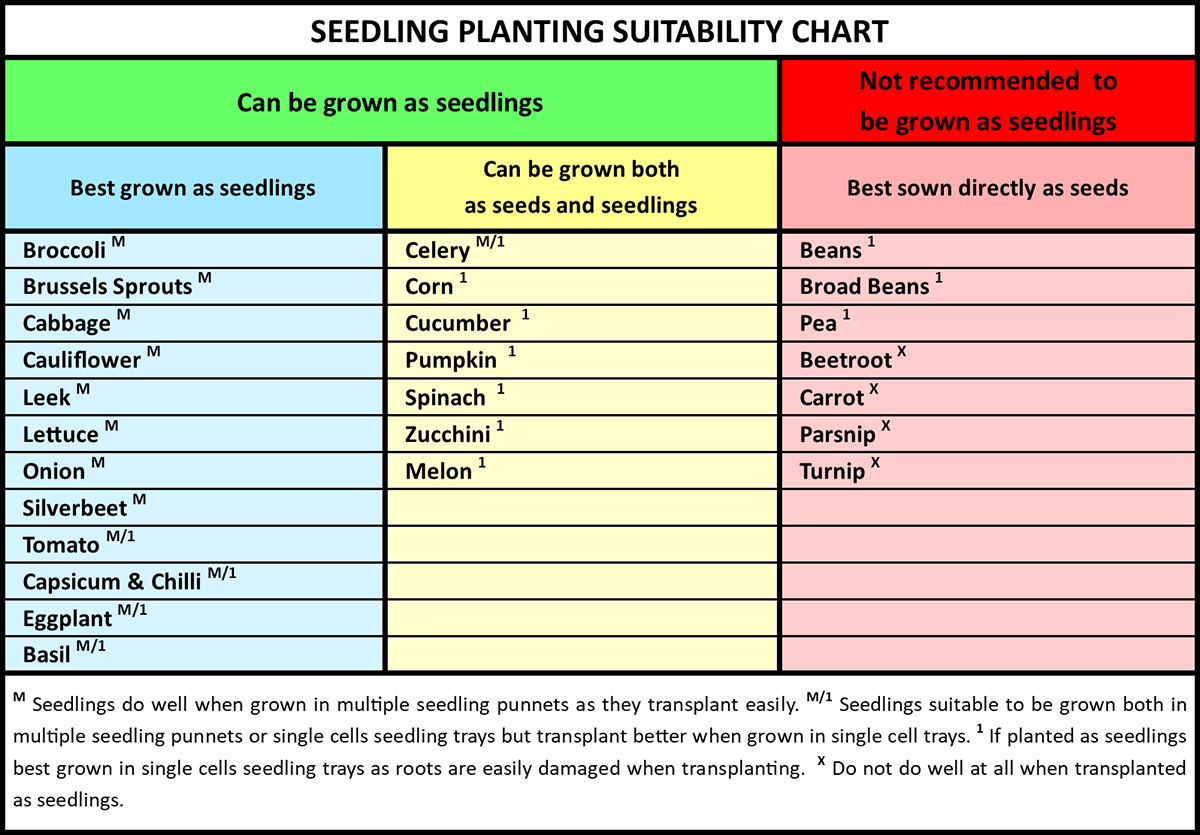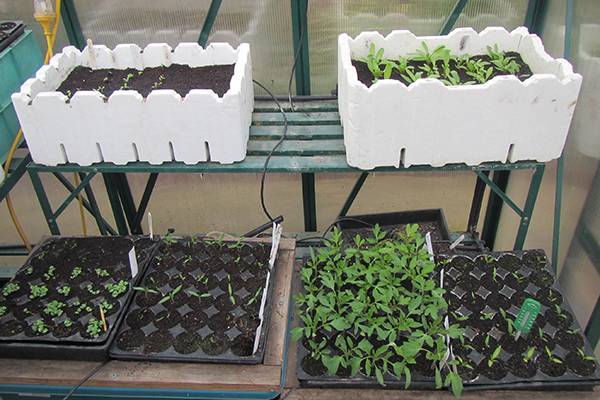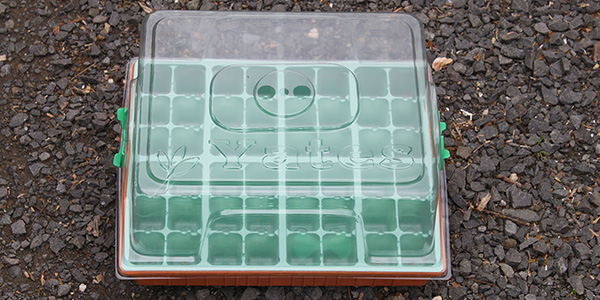Growing your own seedlings offers many advantages over commercial seedlings or directly sowing seeds. This page looks at these advantages, as well as things to consider before you start growing your own seedlings.
The advantages of growing your own seedlings
The advantages of planting seedlings can be summed up with the acronym PEAT.
Protection
It’s easier to protect seedlings from pests because they are concentrated in seedling trays and are mobile, meaning they can be moved to another site if pests are eating the seedlings.
Environment
Easier to control the soil quality (high quality seed raising mix) and heating/cooling (both with glass/plastic domes) and artificial heating devices.
Accuracy
You can place seedlings precisely where you want them instead on the somewhat hit and miss method of sowing directly into a vegetable bed.
Turnover
While a crop in the ground is maturing you can be already growing the seedlings for the replacement crop. Once the crop in the ground is harvested and manured you can immediately plant your seedlings that have been growing, thus reducing the turnover time (the time from planting through to harvest and then making the bed ready for the next planting) by around four to six weeks.
Planting commercially grown seedlings
The Accuracy and Turnover points above also apply to commercially grown seedlings, however commercial seedlings cost a lot more than home grown ones and, when compared to the variety of vegetable seeds the market offers, the range of seedlings available is much smaller. For more information on commercially grown seedlings see: Using Commercially Grown Vegetable Seedling.
Vegetable seedling planting suitability
Some vegetable seedlings, such as lettuces and broccoli, transplant easily. Others, like pumpkin and corn, do not respond well if their roots are disturbed when transplanted and are best grown in single cell seedling trays or sown direct. Yet others, like carrots, respond very poorly when transplanted as seedlings and are best sown directly. For details of which vegetables are best grown as seedlings and which should be sown directly see the Seedling Planting suitability chart below.

To download a printable PDF of this chart click HERE.

This photo shows two different ways to grow your own seedlings. TOP SHELF: Lettuce and silverbeet seedlings growing in styrofoam boxes. BOTTOM SHELF: Tomatoes, basil and capsicum growing in single cell seedling trays in Aquarium heated propagation boxes.
This page looks at the advantages of growing your own seedlings, it does not cover how to grow them. The links below give the gardener some hints on how to successfully grow their own seedlings.




